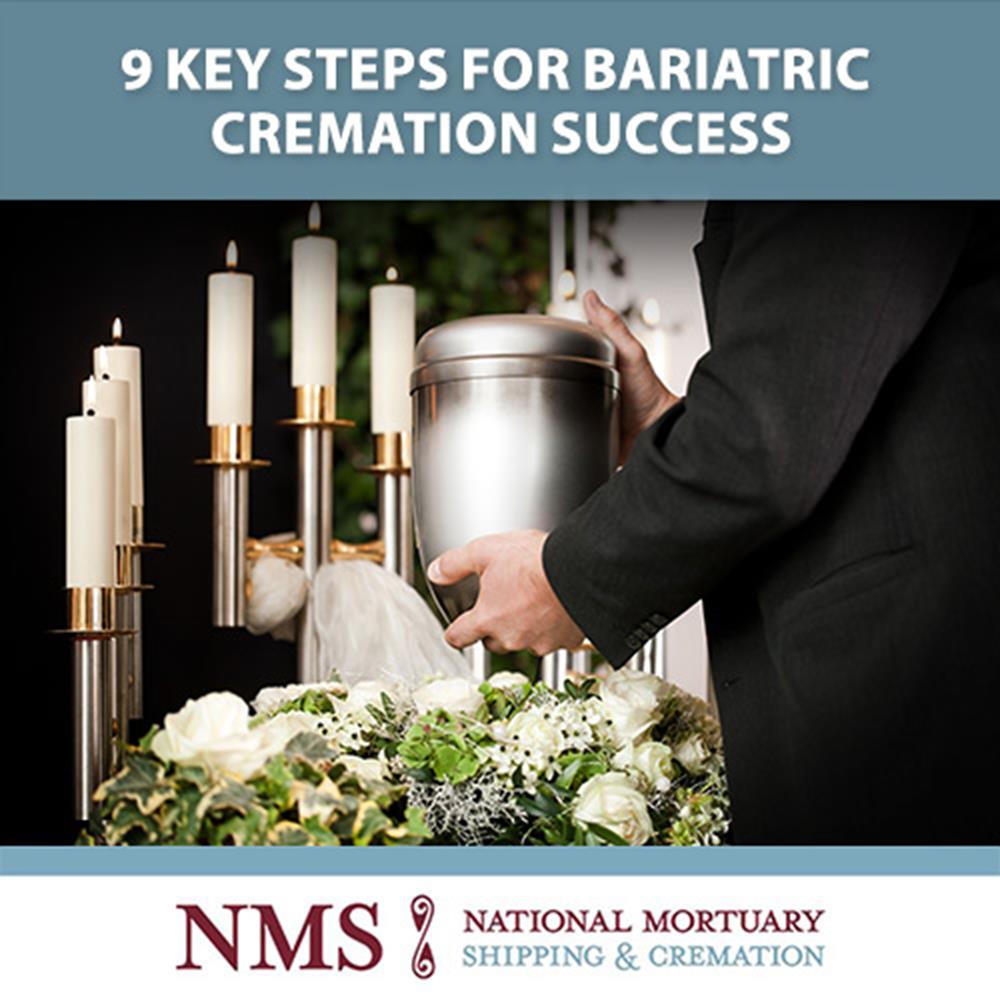
The boom continues…
Bariatric cremation isn’t going anywhere soon.
Last year we wrote an article to help funeral directors get prepared for the bariatric “boom” taking place in the mortuary industry. 130 million adult Americans are overweight and over 10 million are considered morbidly obese. This epidemic isn’t going anywhere any time soon. What this means in the death industry is a shift in planning for things like transportation, body prep, and possibly most important shift: cremation techniques.
Why is cremation of bariatric decedents such a focus? It is very dangerous, and improper technique and facility prep have led to fires and even explosions. While the procedure is delicate, it really just comes down to a few minor adjustments and tweaks to your current procedure. Most of all, it requires attention and care to be executed properly.
Let’s look at 9 key steps to bariatric cremation success:
1. Get off to a Cool Start
Your chamber needs to start off cool, so you should either make this your first cremation of the day or wait 12 hours from the most recent cremation before starting the procedure.
2. Heat it Up
Pre-heating your secondary chamber or afterburner should be business as usual. Just follow the guidelines of your environmental permit.
3. Size it Up
You need a 1-inch clearance on the sides of the casket and top vertical edges for a safe burn. Some standard chambers are too narrow to accommodate. It goes without saying that you should measure the chamber and the casket prior to attempting to load it into the space.
4. Put it in Reverse
It could be worth considering loading the remains in reverse for a very specific reason. This would keep the bulk or mass further away from the burner, enabling better control.
5. Slow Down
As with any cremation procedure, bariatric cremation requires patience and skillful execution. Be careful not to scrape the top or sides of the chamber when loading the casket.
6. Take Control
Newer machines are built in a way that will self-regulate the temperatures to prevent overheating. However, on older machines, you may need to watch the temperature more closely. One way to prevent your older machine from overheating is once you have ignited the main chamber and ensure the remains have started the cremation process, IMMEDIATELY turn off the burner and keep a steady watch on the chamber temp. If the temperature falls, it might be necessary to repeat the ignition procedure. It is imperative that the operator remains with the chamber during this time.
7. Let it Begin
When the temperature steadily increases, the cremation process has started. Body fat has a much higher BTU (Around 17 times that of normal tissue), so a bariatric body has enough energy to maintain the burn for an extended period of time.
8. Keep an Eye on the Set Points
The temp in the secondary chamber will rise above its set point as the temperature increases in the primary chamber. As that temp increases, gases will move more quickly through the secondary chamber. You might even see visible emissions as a result. If this happens, turn off the burner in the secondary chamber until the temperature hits the original set point.
9. Let it Fall
When temperature in the primary chamber begins to fall, you can start to set up the cremation unit as a normal cremation. Careful monitoring for spikes in temperature is required, so attention to detail is still imperative at this stage.
The bariatric cremation process is just one factor in being able to successfully handle the bariatric boom in the death care industry. Transportation, preparation, and vessels are all part of the discussion as well, and each requires special attention. National Mortuary Shipping and Cremation is here to help. Contact us today and let us see what we can do to help your business in the bariatric funeral market.
Let’s Discuss Bariatric Cremations